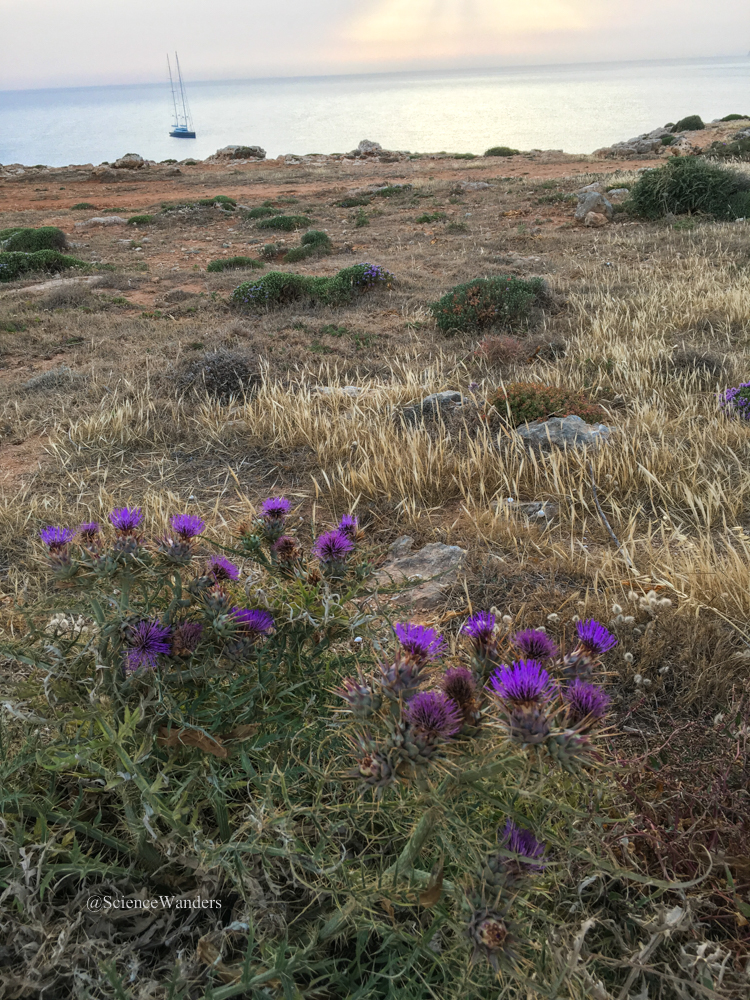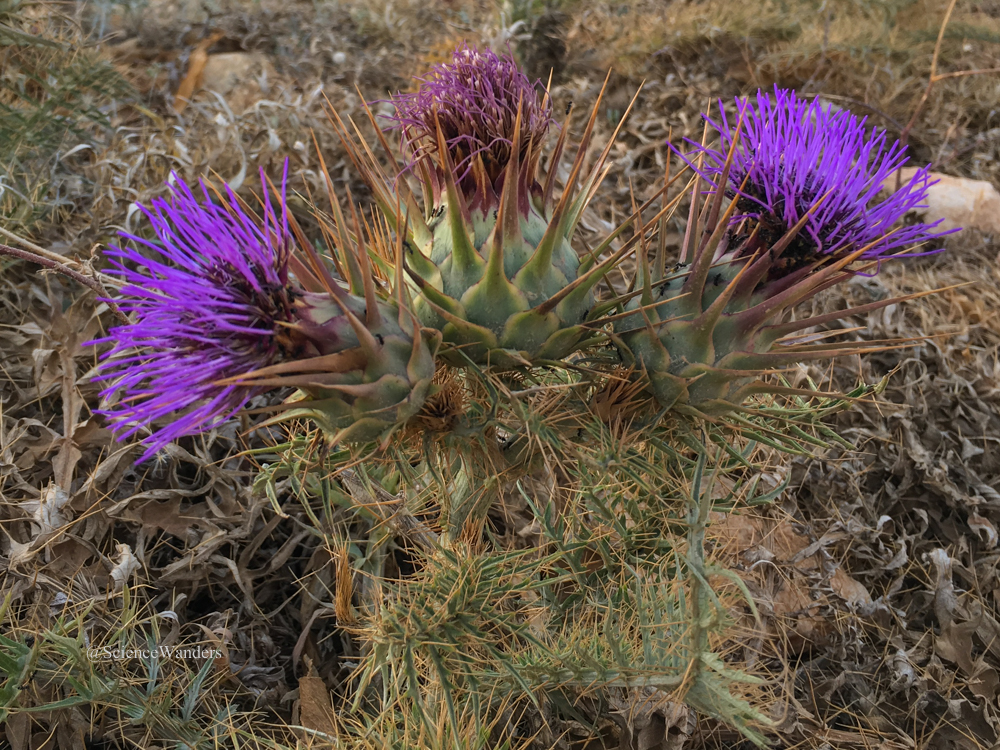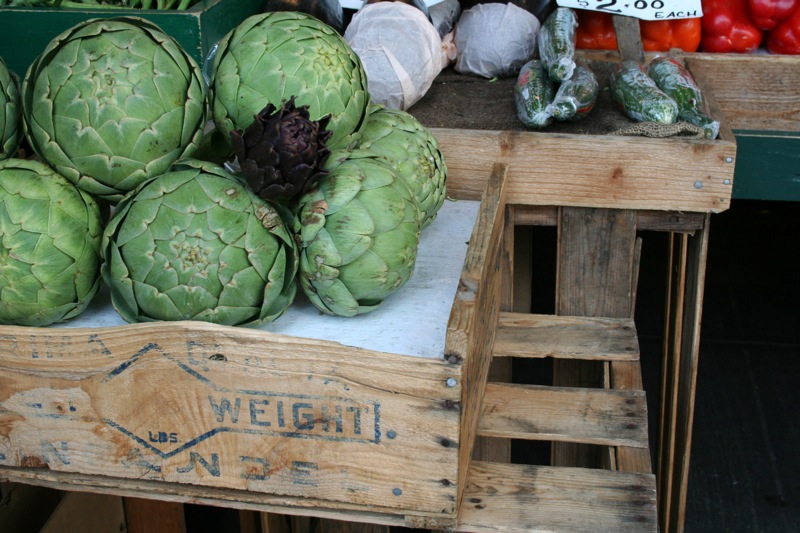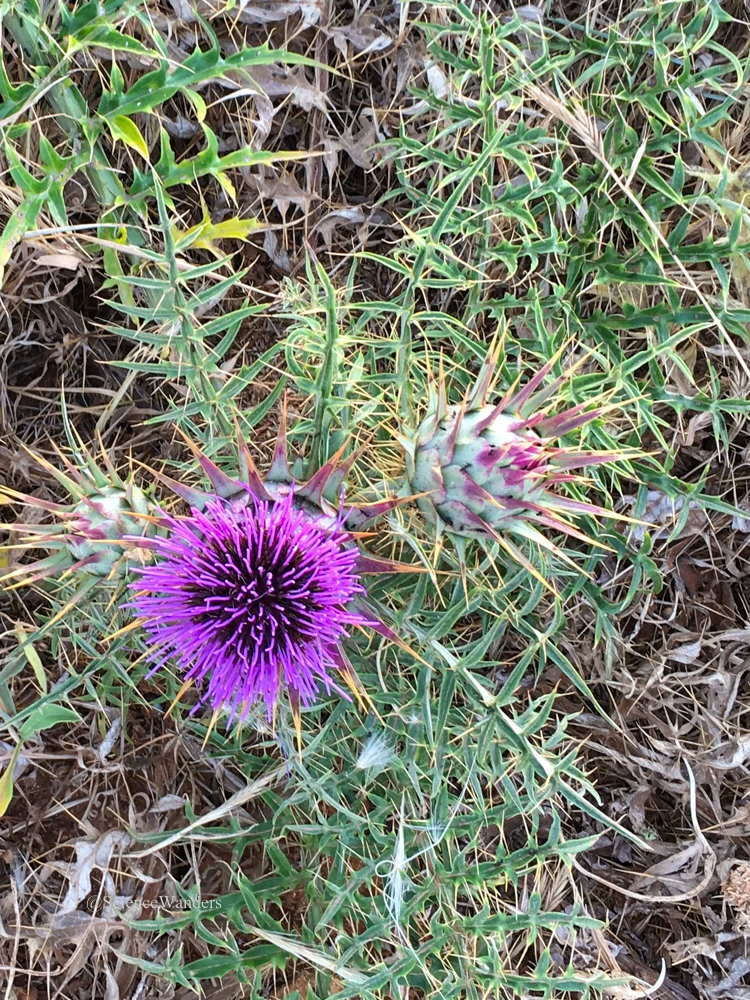In spring, Malta’s countryside is dotted with the violet blooms of wild artichoke (Scientific name: Cynara cardunculus, Maltese name: Qaqoċċ tax-xewk). The plant actually predates man’s arrival on the islands, and has likewise been found in other countries around the Mediterranean for millennia.
Although it adds a striking pop of colour wherever it grows, most people will walk past it without a second thought, common as it is. But it’s thanks to this plant (and a little human meddling) that we have the cultivated globe artichoke. Hence its name.

With threatening spines protecting its edible fleshy interior, it looks altogether less appetizing than the globe artichoke typically found in a grocery store. But this is that artichoke’s mama.

The spines evolved as protection from animals that might want to feed on the plant. But us humans have never said no to anything that could be edible. The Romans were the first to add it to their diets, around the first century AD. Not content to leave it at that, they also put it to work in various other uses, including as a baldness cure and aphrodisiac.
Booking.comOver the years, Roman farmers reversed natural evolution – choosing less and less spiny variants, with larger and larger heads, to form the next year’s crop. This slowly led to the globe artichoke we know today (The wild artichoke is also mother to the lesser known vegetable, cardoon. In this case, leafier and leafier variants were selected for instead.) The plants are still so genetically similar that they are considered the same species, and can interbreed. Historically, the most likely spot for this selection to have taken place is on Malta’s neighbouring island, Sicily.

After all the work that went into cultivating it, the globe artichoke fell out of favour with the fall of the Roman Empire. But it was rediscovered by the Arabs in the Middle Ages, who brought it to Europe, where it spread onwards to America. Caravaggio, Catherine de Medici and Henry VIII all became big fans, and the vegetable was even grown by Martha and George Washington.
The history of the plant continues to evolve – modern uses include as a biofuel and coagulator in cheese production. The Romans may also have been right to consider it medicinally, though wrong in its application – extracts from the plant have been shown to have strong antimicrobial and anticancer properties.
It may look unassuming, but this species packs one mighty punch.
